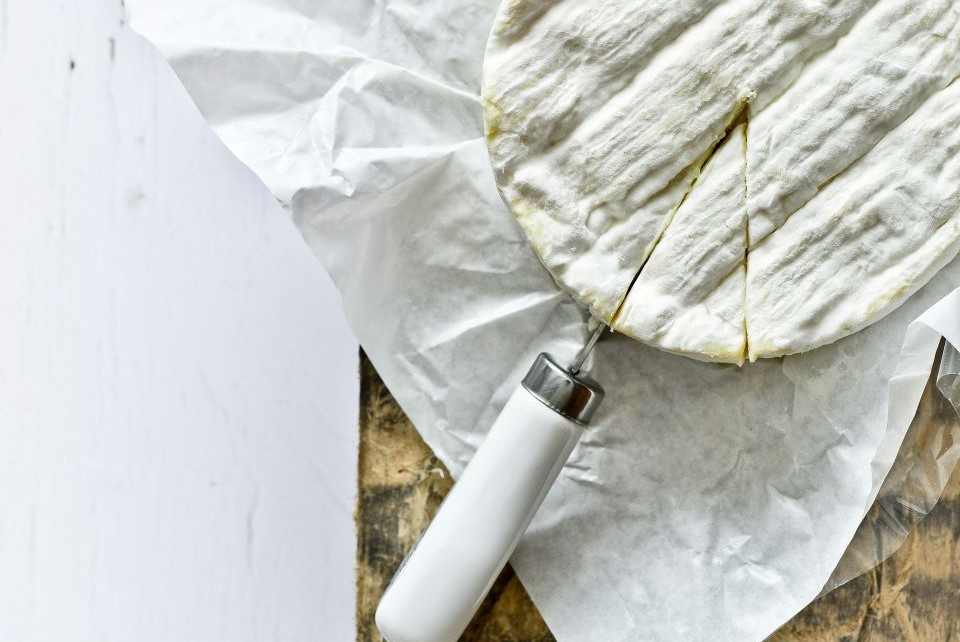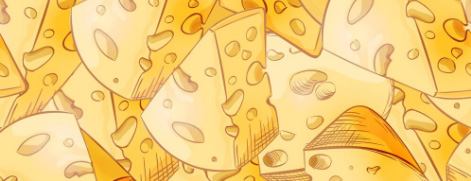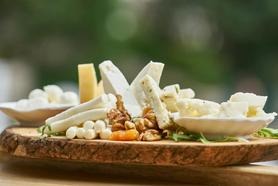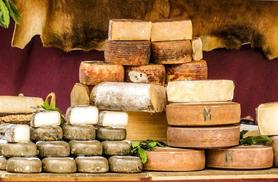The Creamy World of Soft Cheeses: Types, Uses & Pairings

Soft cheeses come in a variety of textures and flavours, making them incredibly versatile in the kitchen and on the cheeseboard! In this guide, we’re taking a look at the types of soft cheese, how to use them in everyday cooking, and the best pairings to truly indulge. Whether you’re a seasoned cheese connoisseur, or just curious to try something new, there’s a soft cheese for everyone!
What is Soft Cheese?
Soft cheese is known for its creamy texture and mild flavour. Because soft cheeses require little to no aging, they are smooth and spreadable - which is why they have become a staple in everyday dishes. Although the texture of soft cheeses are similar, they vary in taste and can be enjoyed in countless ways.
Types of Soft Cheese
There are so many types of soft cheese, we bet you haven’t tried them all!
Brie
Originating in France (Île-de-France region), Brie is a buttery and creamy cheese with a subtle earthy note when ripe. The rind adds a slight bitterness and is best eaten with the soft centre. Brie is commonly served on cheese boards, or served with fruit and nuts.
Camembert
Camembert is similar to Brie, but often has a less mild taste and a more earthy notes. Originating in Normandy, France, camembert is creamy inside with a tender rind. Camembert is commonly baked whole with garlic and rosemary, spread on bread, or paired with cider, fruit or charcuterie.
Ricotta
Made from the whey leftover from other cheeses, ricotta is fresh, light and slightly grainy. Ricotta comes from Italy, so it's no surprise that it's often used to fill pasta like ravioli or cannelloni, or stirred into classic desserts such as tiramisu and cheesecake.
Mascarpone
Originating in Lombardy, Italy, mascarpone is a rich, silky and mildly sweet soft cheese. Similarly to ricotta, mascarpone is used as a key ingredient in Italian dishes like tiramisu, risotto, cheesecakes and pasta sauces.
Goat Cheese (Chèvre)
Goats cheese is a tangy and earthy soft cheese, which can have a creamy or crumbly texture depending on its age. Goats cheese is widely produced, but originates from France. It’s typically best crumbled over salads, used in tarts or paired with nuts.
Cream Cheese
Commercialised in the 19th century, cream cheese originates from the United States. It is a soft and spreadable cheese with a mild, smooth and slightly tangy taste. Cream cheese is popularly used with bagels, for fillings, and as a base for cheesecakes.
Burrata
Burrata is very similar to the harder cheese, Mozzarella, but a lot creamier, delicate and milky. Its oozing centre is made from stracciatella and cream, wrapped in mozzarella skin. Burrata is commonly served fresh with tomatoes, olive oil, and basil, or paired with prosciutto and fruit.
Neufchâtel
Neufchâtel is one of France’s oldest cheeses, originating from Normandy. It has a similar taste to brie, but is tangier and saltier. Neufchâtel is soft and slightly crumbly, which makes it an ideal spread for bread and for fillings.
Stracchino
Stracchino, also known as crescenza, is a cow's milk cheese from Northern Italy. Stacchino has an ultra creamy texture, with a mild and slightly tangy taste. It is commonly used as a spread for focaccia and flatbreads, or served with fresh olives and herbs.
How to Use Soft Cheese in Daily Cooking
Soft cheeses are incredibly versatile and can easily be used to add creaminess and flavour within quick, easy meals. Here are the top ways to use soft cheeses in daily cooking:
- Stir into pasta for a silky and indulgent sauce
- Add creaminess to omelettes and scrambled eggs
- Use it as a stuffing for chicken breast, mushrooms or peppers
- Blend with herbs for a delicious dip
- Add to sandwiches and bagels for added nutrients and taste
- Crumble on salads or grilled vegetables
- Add as a topping on your homemade pizza
Best Wine Pairings for Soft Cheese
If you love to sit back and enjoy a glass of wine, we’ve got you covered with the perfect soft cheese pairings!
For brie and camembert, opt for light, fruit red wines like Pinot Noir, or crisp white wine such as Chardonnay or Sauvignon Blanc. Sparkling wines like Champagne also work wonderfully.
Bright and acidic wines like Sauvignon Blanc or a dry Rosé pair perfectly with goat's cheese.
If you’re looking to pair wine with mascarpone and ricotta, choose sweet or medium-bodied wines such as Moscato, Riesling, or Pinot Grigio.
Burrata is perfectly paired with a dry, crisp white wine, like Vermentino or Grüner Veltliner.
Cream cheese and neufchâtel are versatile enough to pair with dry whites, light reds, or even a refreshing Prosecco.
There are so many ways to indulge in soft cheeses, so why not experiment to find your perfect pairing today?






Loading comments...